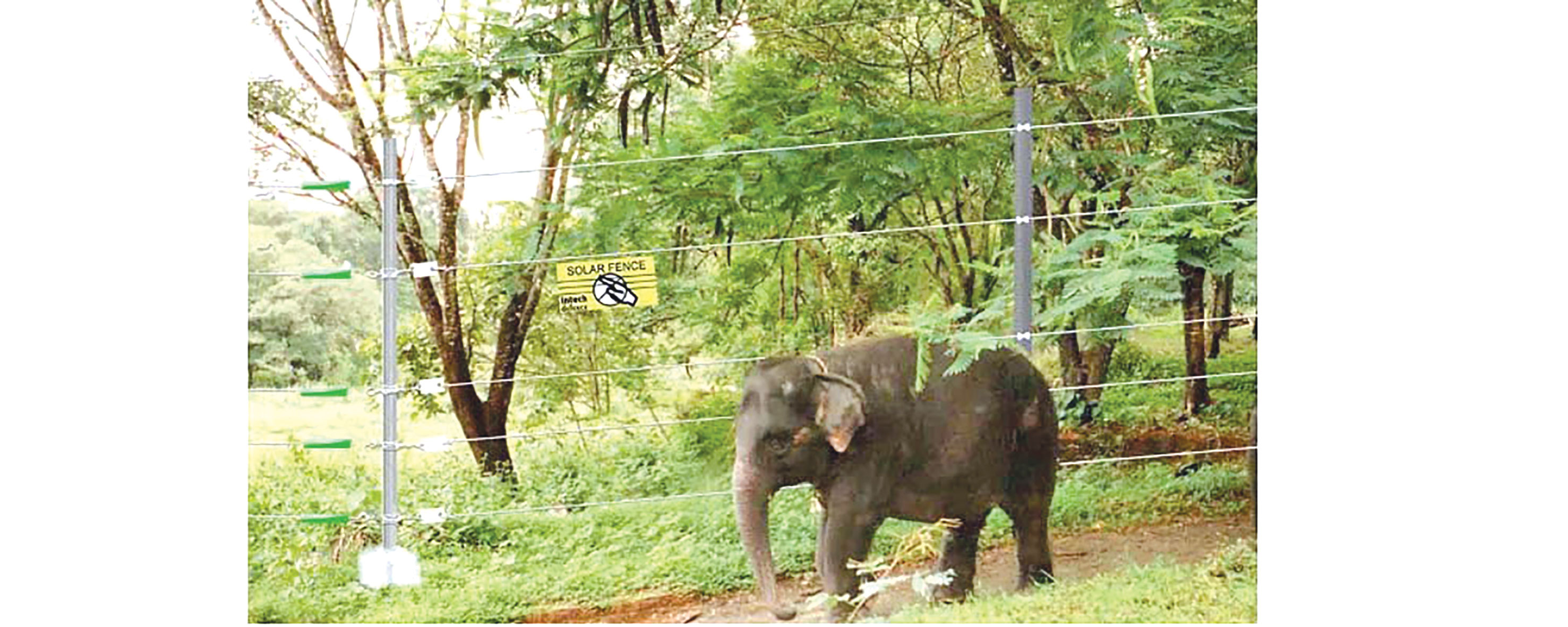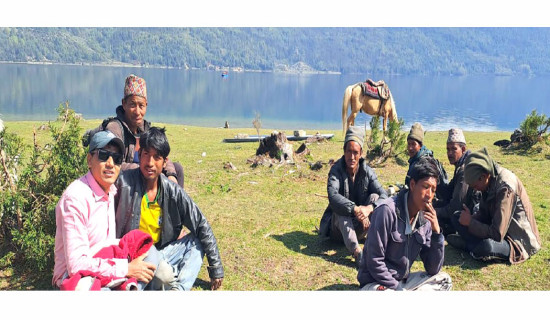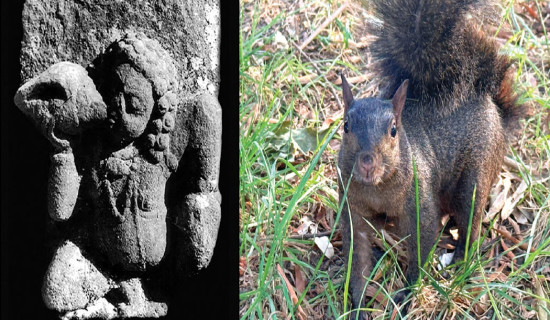- Friday, 14 November 2025
Rising human-elephant conflict Fifteen people lose lives in thirteen years
By Hari Prasad Koirala,Urlabari, Feb. 12: As human dependence on forests increases, conflicts between wildlife and people are also rising in Morang.
Elephants that migrated from Assam, India, crossing the Mechi River into Nepal via Bahundangi, have yet to return to India this year. In the past, these elephants would arrive in Nepal around June/July and return to India around December/January.
However, in recent years, locals in the elephant-affected areas reported that the elephants seem to be lingering in the areas surrounding the Madan Bhandari Highway, along the Chure region.
According to Associate Professor Shailendra Yadav, Chief of the Department of Parks, Recreation and Wildlife Management at Tribhuvan University's Institute of Forestry, elephants mainly come to Morang for breeding.
Nepal provides a safer environment for breeding than India. Studies show that last year alone, two elephants gave birth and raised their calves in Morang’s forests, he informed.
“Forests are being managed solely for human consumption, rather than for eco-tourism and biodiversity conservation,” he said and warned that “If conservation efforts are not prioritised, human-wildlife conflicts will only intensify.”
Yadav said that Nepal has three distinct elephant zones -- Mechi to Bagmati, Bagmati to Dang and Dang to Shuklaphanta Wildlife Reserve. “If inbreeding continues for too long in a single region, elephant populations will suffer genetic decline. Therefore, it is crucial to establish biological corridors to allow elephants to move freely between these three zones,” he said.
According to Yadav, elephants are incredibly intelligent creatures. Studies have shown that if a mahout (elephant rider) mistreats a calf, the mother elephant may recognise this and attack the mahout.
Elephants typically do not cause harm when moving in groups. However, isolated elephants tend to be more aggressive. Unfortunately, in Nepal, people attempt to drive elephants away by setting fires, using sirens and throwing stones. These methods are not effective and may even provoke elephants further. He also advised caution when dealing with isolated elephants.
Similarly, he suggested large-scale plantations of milky-white sap-producing trees and tall grass species in forests to provide elephants with natural food sources. “If elephants find enough food in the jungle, they are less likely to venture into human settlements, reducing human-elephant conflict naturally,” he said.
15 people, 9 elephants killed in 13 years
The human-elephant conflict that began in Morang in 2011/2012 has continued to increase. In 2024/2025 alone, elephants killed three people.
According to Ghanshyam Yadav, a forest officer at the Morang Division Forest Office, elephants have killed 15 people over the past 13 years.
However, humans have also killed elephants. During this period, nine elephants have died after getting caught in human-made traps. In 2011/2012 alone, three elephants were killed, escalating the conflict even further. “The conflict is not just between humans and elephants but between humans and wildlife in general, Yadav said.
Since 2013/2014, the government has spent Rs 7.5 million on compensation for elephant-related damages.
A total of 75 families in northern Morang, especially in Kerabari, Sundarharaicha, Letang and Miklajung, have been affected by elephant attacks during this period.
While the Division Forest Office provides compensation recommendations, some local governments also offer immediate relief to victims. However, there is no consolidated data on these relief payments.






-original-thumb.jpg)









